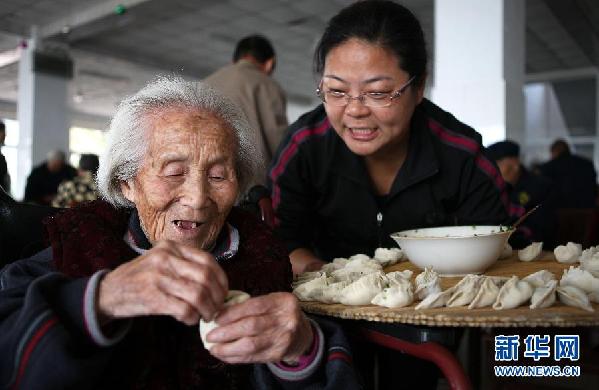Embracing the 'silver economy' with public private partnership
- By He Jingwei
 0 Comment(s)
0 Comment(s) Print
Print E-mail China Daily, May 10, 2016
E-mail China Daily, May 10, 2016
|
|
|
The gap between mounting demand for elderly care and the limited capacity of service provision is starkly immense in China. |
The Chinese society is aging at an unprecedented rate. The number of people aged 60 or above reached more than 220 million at the end of 2015, accounting for close to 16 percent of the country's population. The figure is expected to increase to 25 percent by 2030. The elderly population is expected to grow to 500 million, larger than the entire population of the United States, by 2050.
These drastic demographic changes are driven by the declining fertility rate because of the one-child policy and changing social values toward child-bearing, as well as the rising longevity as a result of the general improvement in living standards. The impact of aging on the social service system is profoundly significant.
Unlike Japan, South Korea and other developed countries which were rich enough before the aging of their populations, China is not there yet. China's problem is compounded by the vast regional disparity in household income and the urban-rural divide.
As a Confucian society, old-age support in China has been traditionally reliant on filial piety and family support, which have been unfortunately weakened by the emerging 4-2-1 family structure (4 grandparents, 2 parents and 1 child) and the long physical distance between retired parents and their working children. Worse, the elderly suffer not only from acute illnesses requiring hospitalization but also from chronic disability because of diseases such as dementia, stroke and osteoporosis, which need long-term care that is far more resource-consuming.
The gap between mounting demand for elderly care and the limited capacity of service provision is starkly immense in China.
According to the Ministry of Civil Affairs, China has only 2.1 nursing home beds for every 1,000 elderly, a level far lower than the international standard for lower middle-income countries. Only about 30,000 elderly care institutions have been registered with 5.8 million beds in the country, suggesting enormous unmet demands. Eldercare in China is still in its infancy. Despite the existence of government-funded elderly homes, standards of service tend to be low. More important, the chance of getting admitted is as good as winning a lottery given the extremely long waiting list.
Private facilities have been thriving, mainly in big cities such as Beijing and Shanghai, but expensive costs have denied most senior citizens access. Associated with low occupational prestige, the people working in the eldercare sector are typically lowly educated with inadequate professional training.
These challenges, however, also augur immense opportunities. Catering to the variety of needs of the elderly population, the "silver hair" market has the potential to flourish in China. Some think tanks estimate the Chinese people will spend more than 10 trillion yuan ($1.54 trillion) from 2016 to 2020 on eldercare, with an annual growth rate of about 17 percent. A government report estimates the market could be worth 4 trillion yuan. The development of the silver economy has been, however, largely constrained by the lack of supportive policy framework and limited sources. A few important policy moves have been taken in recent years.
For instance, the Ministry of Civil Affairs and Ministry of Commerce in 2014 announced that private eldercare facilities and service industry will be open for private investment, hoping that international investment could fill up the gap of financing and help develop the delivery system. A monthly government subsidy from 300 yuan to 500 yuan per bed is also provided to eldercare facilities. The injection of fiscal resources has helped a great deal in sustaining the operation of profit-slim eldercare institutions.
The resource shortage for elderly services is not unique to China. International experiences show public private partnership is a promising solution. Given the vast unmet demand and respective strengths and weaknesses of both sides, government and private institutions can play a complementary role in both financing and providing eldercare services.
For instance, aside from financing public facilities by governments' general revenues, more targeted subsidies could be injected to finance infrastructure projects, staff training and operation of private facilities. Moreover, a key barrier to accessibility for elderly service users often lies in the gap between high costs and low ability-to-pay, reducing both utilization and operational efficiency. A useful instrument is means-tested vouchers that directly empower the elderly to access services. The implementation of similar initiatives in Hong Kong has resulted in remarkable success in reducing the financial barriers for the elderly.
Eldercare encompasses a wide range of services, including but not limited to formal residential care, aging-in-place community care and long-term care for senior citizens with chronic disability. Public and private facilities of different sizes have their own niche in this vast multi-tier market, especially given the regional disparity and urban-rural divide in China.
The author is an assistant professor in the Department of Asian and Policy Studies, Hong Kong Institute of Education.







Go to Forum >>0 Comment(s)